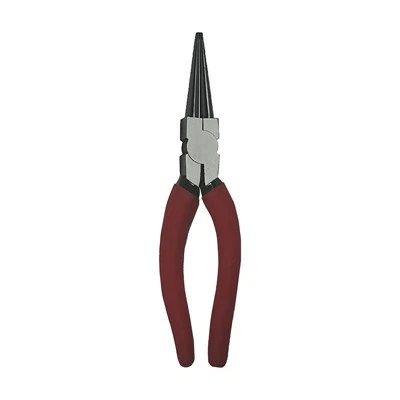Hey there! As a supplier of slip joint pliers, I often get asked about the wear - resistance of these handy tools. So, let's dig into what wear - resistance really means when it comes to slip joint pliers.
First off, wear - resistance is all about how well a tool can withstand the effects of friction, abrasion, and general use over time. For slip joint pliers, this is super important because they're used in all sorts of tasks, from gripping and bending wires to holding small objects.
Let's talk about the materials. The most common material for slip joint pliers is high - carbon steel. This type of steel is known for its strength and durability. High - carbon steel has a relatively high carbon content, which gives it hardness. When you're using slip joint pliers to grip something tightly or cut through a wire, the high - carbon steel can resist the wear that would otherwise occur. For example, if you're working on a DIY project and using the pliers to bend some copper wire, the high - carbon steel jaws won't wear down quickly, ensuring that the pliers maintain their gripping power.


Another factor that affects wear - resistance is the heat treatment. After the pliers are made from the raw steel, they go through a heat - treatment process. This process involves heating the steel to a very high temperature and then cooling it rapidly. Heat treatment can change the internal structure of the steel, making it harder and more wear - resistant. For instance, when the steel is quenched and tempered, it becomes less likely to deform or wear when under stress.
The surface finish of the slip joint pliers also plays a role in wear - resistance. A smooth surface finish can reduce friction when the pliers are in use. Some pliers have a chrome - plated finish. Chrome plating not only gives the pliers an attractive look but also provides a protective layer. This layer helps to prevent rust and corrosion, which can accelerate wear. When the pliers are exposed to moisture or harsh working environments, the chrome plating acts as a barrier, keeping the underlying steel safe.
Now, let's think about the design of slip joint pliers. The way the jaws are shaped and the quality of the joint can impact wear - resistance. Well - designed jaws distribute the force evenly when gripping an object. If the force is concentrated in one small area, that area will wear out faster. A good - quality joint also ensures that the pliers open and close smoothly. A loose or poorly - made joint can cause the jaws to misalign, leading to uneven wear.
When it comes to real - world applications, the wear - resistance of slip joint pliers can make a big difference. In a professional workshop, where pliers are used all day long, wear - resistant pliers can save money in the long run. You won't have to replace them as often, and they'll perform consistently over time. For DIY enthusiasts, wear - resistant pliers mean that you can rely on your tools for multiple projects without worrying about them wearing out quickly.
If you're in the market for high - quality slip joint pliers, you might also be interested in other types of pliers. Check out our Germany Type Long Nose Pliers, German Type End Cutting Pliers, and American Type Bent Nose Pliers. These pliers are also designed with wear - resistance in mind, ensuring that they can handle tough jobs.
In conclusion, wear - resistance is a crucial characteristic of slip joint pliers. It depends on factors like the material, heat treatment, surface finish, and design. By choosing pliers with good wear - resistance, you're investing in a tool that will last longer and perform better.
If you're interested in purchasing slip joint pliers or any of our other hand tools, don't hesitate to reach out. We're here to help you find the right tools for your needs. Whether you're a professional tradesperson or a weekend DIYer, we've got the pliers that can get the job done. Let's start a conversation about your tool requirements and see how we can assist you.
References:
- "Hand Tools: Selection, Use, and Maintenance" by Various Authors
- Industry research on hand - tool manufacturing and materials science





